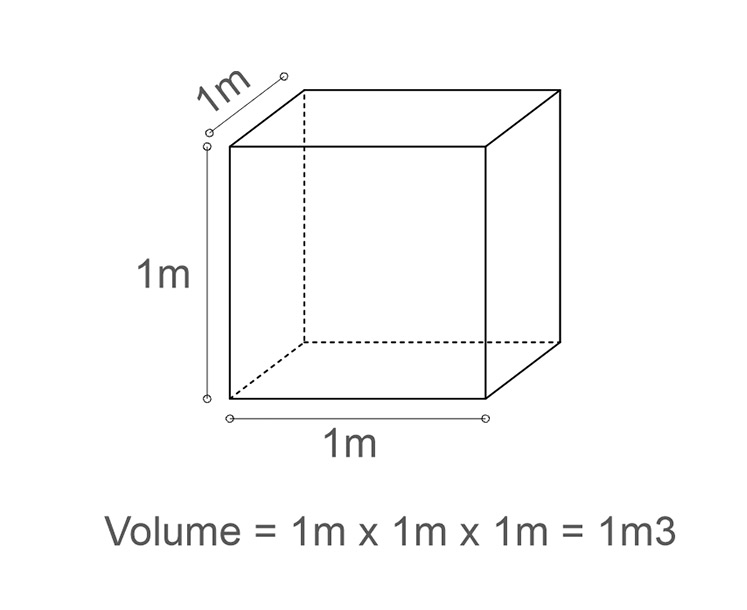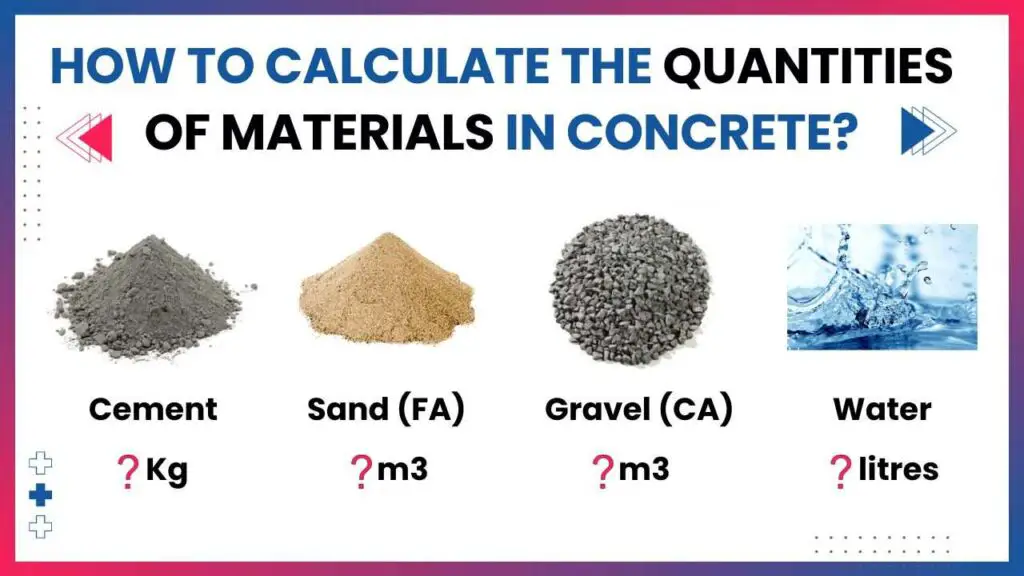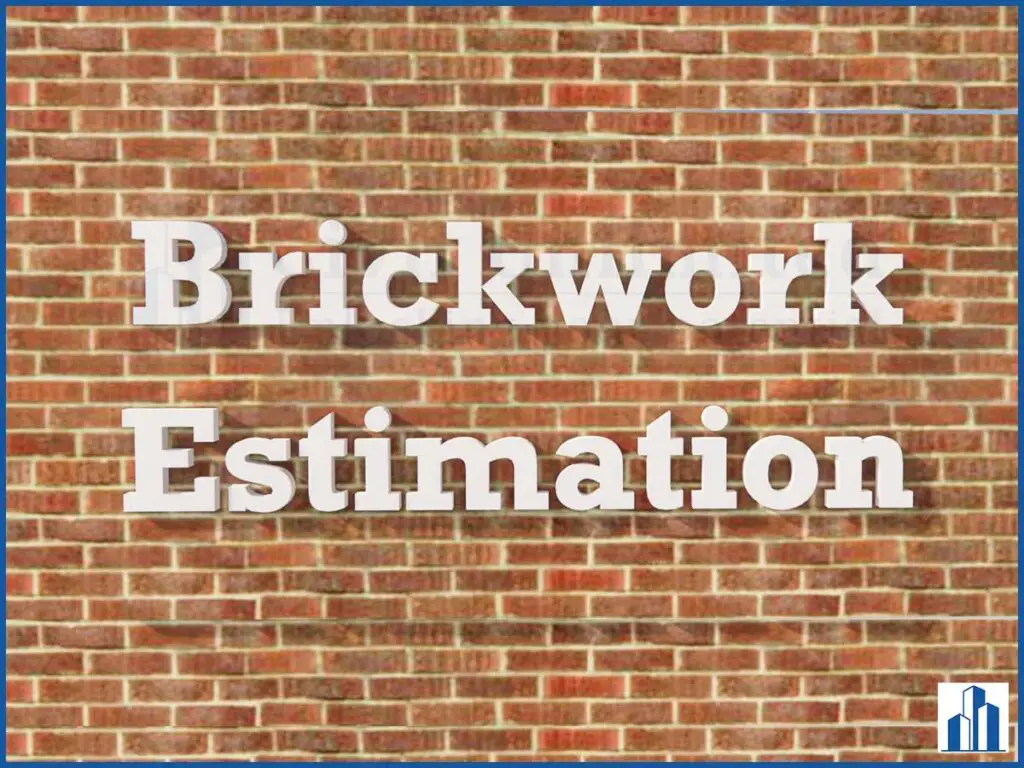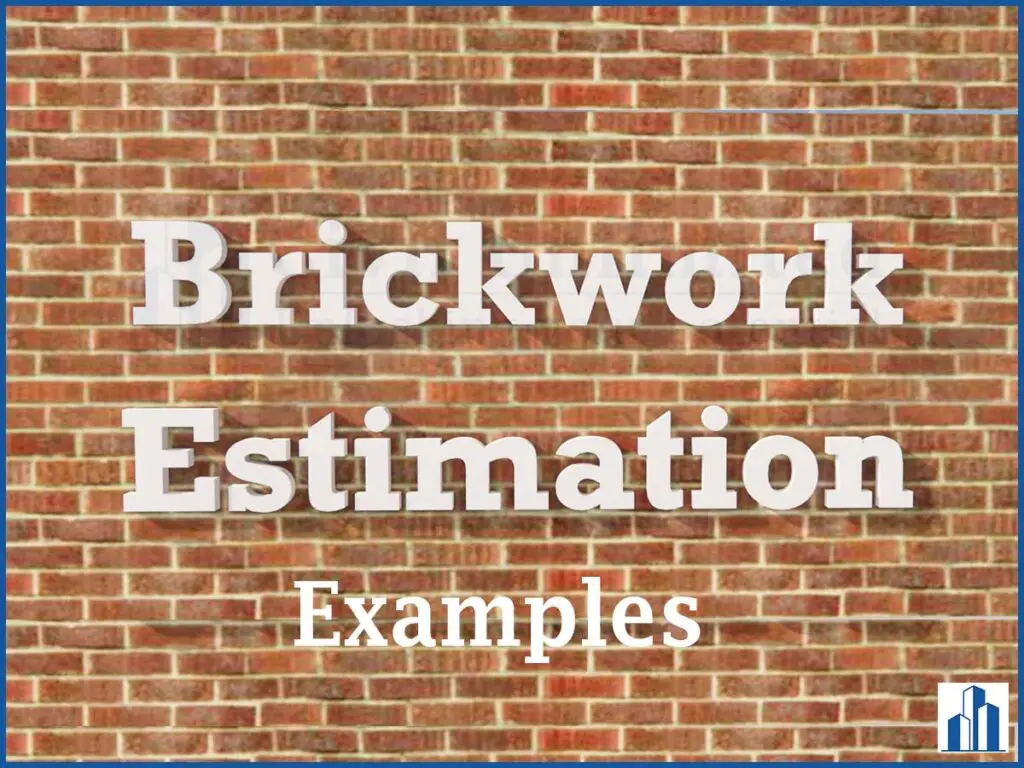Concrete is one of the most versatile and widely used construction materials around the world.
It is used in several important structural elements like RCC slabs, beams, columns, footing, driveways, etc. Therefore, it is important to produce good-quality concrete at the construction site.
The quality of concrete depends on various parameters such as,
- Grade of concrete
- Mix ratio of concrete
- Quantities of its ingredients
- Mixing of concrete
- Workmanship of labour etc.
So, In this article, let’s learn how to calculate the quantities of cement, sand, and coarse aggregates in the concrete.
Concrete material calculation
In this section, we explained the process in a detailed manner. If you want to know some quick calculations, please refer to the examples section.
Step 1: Required data
1) Know the volume of concrete needed. This is done by calculating the dimensions of the element.
Here, we find the quantities of material needed for 1 cubic meter.

So, we have to find how much materials are required to make the concrete that fills the above cube. We know that the concrete is in wet condition.
So, Wet volume of concrete needed = 1m3
2) Know the mix ratio of the concrete you are going to use.
There are two types of concrete mix proportions available. They are the Nominal mix proportion and the Design mix proportion.
If you want to know more about each of them in detail, then check out this article:
Concrete – All the basics you need to know
Here, I take the concrete proportion as 1: 1.5 : 3 (Cement: Sand: Gravel) which is nothing but a M20 grade of concrete. (Sand = Fine Aggregate FA, Gravel = Coarse Aggregate CA)
3) Know your water-cement ratio (W/C)
Water cement ratio is an important parameter used to calculate the quantity of water required for the mix. The minimum values are mentioned in IS 456: 2000, however, it can change according to one’s experience or any other additional factors.
4) Know your Dry to wet volume ratio
The volume we derived here is the wet volume of the concrete. But we measure materials in their dry state. In the dry state, there are air voids present in the material, so when we add water, their volume decreases due to the expulsion of air voids. So as a result, we get less volume of wet concrete than required.
Through various experiments, scientists found that the volume decrease will be in the range of 50 – 60%. 54% shall be widely accepted, but still, some use 57%.
So, In order to make 1 cubic meter of wet mix concrete, we need 1.54 cubic meters of materials in their dry volume.
So, Dry volume of concrete needed = Wet volume of concrete x 1.54
Dry volume of concrete needed = 1 x 1.54 = 1.54 m3
Step 2: Calculate the quantity of cement

(or)

Both are the same. Here, I use the second one for better clarity.
In our mix proportion,
- Cement proportion = 1
- Fine Aggregate (sand) proportion = 1.5
- Coarse Aggregate (Gravel) proportion = 3
- Total proportion = 1+1.5+3 = 5.5
Volume of cement required = 1 x 1.54 x (1/5.5) = 0.28 m3
To convert it into kg, multiply the above volume by the unit weight of cement which is 1440 kg/m3
Quantity of cement required = 0.28 m3 x 1440 kg/m3 = 403.2 kg
Number of cement bags required = Quantity of cement required / Weight of one cement bag
Generally, the weight of one cement bag = 50kg
Number of cement bags required = 403.2/50 = 8.06 bags. (Roundoff to higher value for purchase)
Step 3: Calculate the quantity of Fine Aggregates (Sand)
FA = Fine Aggregates

Volume of FA (sand) required = 1 x 1.54 x (1.5/5.5) = 0.42 m3
Generally, we use cubic feet (cft) as a quantity to buy sand, not kgs.
To convert m3 into cft, multiply it by 35.31.
Volume of FA (sand) required = 0.42 x 35.31 = 14.83 cft.
Step 4: Calculate the quantity of Coarse Aggregates (Gravel)
CA = Coarse Aggregates

Volume of CA (Gravel) required = 1 x 1.54 x (3/5.5) = 0.84 m3
Volume of CA (Gravel) required = 0.84 x 35.31 = 29.66 cft.
Step 5: Calculate the quantity of water
Here, let’s assume the water-cement ratio is 0.45.
Water content = 0.45 x Cement content
Water content = 0.45 x 403.2 kg = 181.44 kg
The density of water is 1000 kg/m3 (or) 1 kilogram per liter. So, 1 liter of water weighs about 1kg.
Qty of water required = 181.4 liters
Summary:
In order to make a 1m3 volume of M20 concrete, we need the following materials:
Number of cement bags required = 8.06 bags
Volume of FA (sand) required = 0.42 m3 (or) 14.83 cft
Volume of CA (gravel) required = 0.84 m3 (or) 29.66 cft
Qty of water required = 181.4 liters
It is important to note that the quantity of water required can change drastically when you consider various parameters like the dry condition of aggregates, climatic conditions, etc. So it is recommended to add the water to the mix based on your workability requirements.
Don’t be overwhelmed because of the length of the calculations. It is deliberately given step by step so that you can understand very easily, once you get the concept, you can just put the calculation in your calculator within seconds.
Example calculations
1) Find the quantities of materials required for 10 m3 volume of concrete. Assume the grade of concrete as M20 and the water-cement ratio as 0.46.
Calculation:
Mix proportion for M20 grade of concrete = 1: 1.5: 3 (Cement: FA: CA)

Volume of cement required = 10 x 1.54 x (1/5.5) = 2.8 m3
Quantity of cement required = 2.8 m3 x 1440 kg/m3 = 4032 kg
Number of cement bags required = 4032/50 = 80.64 ≈ 81 bags.

Volume of FA required = 10 x 1.54 x (1.5/5.5) = 4.2 m3 Volume of FA (sand) required = 4.2 x 35.31 = 148.30 cft.

Volume of CA (Gravel) required = 10 x 1.54 x (3/5.5) = 8.4 m3
Volume of CA (Gravel) required = 8.4 x 35.31 = 296.60 cft.
Qty of water required = 0.46 x cement content in kg
Qty of water required = 0.46 x 4032 = 1855 litres
Result summary:
No. of cement bags = 81
Qty of sand required = 148.30 cft
Qty of gravel required = 296.60 cft
Qty of water required = 1855 liters
While purchasing sand and gravel, the common measurement followed is the number of units. (1 unit = 100 cft)
So, in the above case,
The quantity of sand to be purchased = 1.5 units
The quantity of gravel to be purchased = 3 units
2) Calculate the quantity of materials of concrete required for constructing the slab mentioned below.

Calculation:
Wet volume of concrete required = 3m x 3m x 0.15m = 1.35 m3
Mix proportion = 1: 2: 4 (cement: sand: gravel), W/C ratio =0.44
Qty of cement required = 1.35 x 1.54 x (1/7) = 0.297 m3 x 1440 kg/m3 = 427.68 kg
No. of cement bags required = 427.68/50 = 8.55 ≈ 9 bags
Qty of sand required = 1.35 x 1.54 x (2/7) = 0.594 m3 x 35.31 = 20.97 cft (1/4 unit)
Qty of gravel required = 1.35 x 1.54 x (4/5.5) = 1.512 m3 x 35.31 = 53.38 cft (approximately 1/2 unit)
Qty of water required = 0.44 x 427.68 = 188.17 liters.
See, if you practice enough, you can easily calculate the quantities of materials required for a particular volume of concrete in your mobile calculator within seconds. For that, you must have a deep understanding of the calculations. That’s why at the start, we give a long detailed calculation with a step-by-step procedure.
If you don’t want to do any of the calculations above, then use the online concrete material calculator provided below. You can also cross-check the results of the above examples.
Online Concrete Material Calculator

Click here to use the concrete material calculator
Hope you understand everything you need to know about the concrete material calculation. If you have any queries (or) if you find this article helpful, let us know in the comment section.
Read more:
Batching of concrete – An ultimate guide
A List of 38 Essential Construction Tools & Equipment with Names and Pictures
What is shotcrete? | Shotcrete technology | shotcrete concrete



